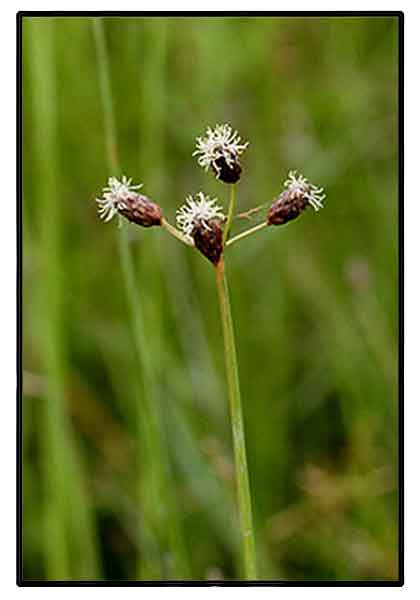
Family • Cyperaceae
Tikus
Badang-badang
Fimbristylis umbellaris (Lam.) Vahl
GLOBULAR FIMBRISTYLIS
San xing piao fu cao
| Scientific names | Common names |
| Dischostylis torresiana Gaudich. | Anahiunan (Manobo, C. Bis.) |
| Fimbristylis efoliata Steud. | Badang-badang (Ilk.) |
| Fimbristylis globulosa (Retz.) Kunth | Tikog (Bis.) |
| Fimbristylis globulosa var. austrojaponica Ohwi | Tikug (Higaonon) |
| Fimbristylis globulosa var. torresiana (Gaudich.) C.B.Clarke | Tikus (Tag.) |
| Fimbristylis globulosa var. vicaryi C.B.Clarke | Fimbry (Engl.) |
| Fimbristylis hypsocolea Hosok. | Fimbristyle (Engl.) |
| Fimbristylis torresiana Gaudich | Fringe-rush (Engl.) |
| Fimbristylis umbellaris (Lam.) Vahl | Globular fimbristylis (Engl.) |
| Fimbristylis umbellaris var. vicaryi (C.B.Clarke) Karthik. | |
| Fimbristylis utilis Elmer | |
| Iria gloobulosa (Retz.) Kuntze | |
| Isolepis gloobulosa (Retz.) Schult. | |
| Scirpus gloobulosus Retz. | |
| Scirpus umbellaris Lam. | |
| Trichelosstylis gloobulosa (Retz.) Nees | |
| Fimbristylis umbellaris (Lam.) Vahl is an accepted species. KEW: Plants of the World Online | |
| Other vernacular names |
| CHINA: San xing piao fu cao. |
| INDONESIA: Mendong (Javanese), Jukut bubut-ut (Sundanese), Werot (North Sulawesi), Sie, Daun tikar, Lai, Mansiang macik, Tiohu, Tokogu, Tuyu. |
| MALAYSIA: Rumput sandang. |
| THAILAND: Phrong klom noi. |
| VIETNAM: Co quam bong tron |
March 2023
![]()
 |
| PHOTOS / ILLUSTRATIONS |
| IMAGE SOURCE: Photographs (2): Fimbristylis umbellaris (Lam.) Vahl / © WIKTROP - Weed Indentification and Knowledge in the Tropical and Mediterranean areas / Non-commercial use / click on image to go to source page / WIKTROP |
Additional
Sources and Suggested Readings |
• |
DOI: It is not uncommon for links on studies/sources to change. Copying and pasting the information on the search window or using the DOI (if available) will often redirect to the new link page. (Citing and Using a (DOI) Digital Object Identifier) |
| List of Understudied Philippine Medicinal Plants |
• |
 |



